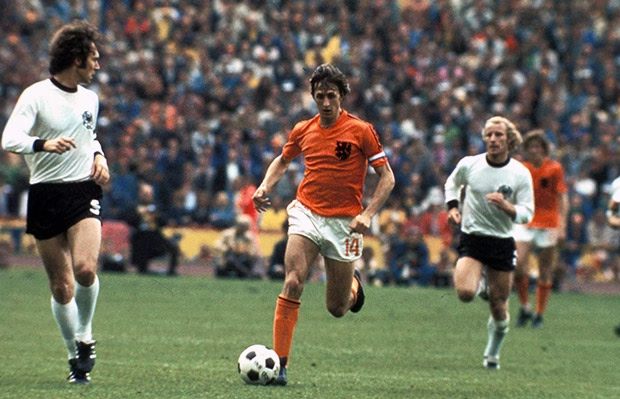The term “Golden Age” is often bandied about in sports, but in football, certain periods truly stand out for their exceptional talent, captivating matches, and enduring impact on the game. Pinpointing a single “Golden Age” is subjective, as different eras have offered unique brilliance. However, we can explore some periods widely considered to be golden ages in football history, examining the factors that contributed to their brilliance and their lasting legacy.
1. The Rise of “Total Football” (1970s):
- Key Characteristics: This era witnessed the emergence of “Total Football,” a revolutionary tactical philosophy pioneered by Dutch club Ajax and their legendary manager, Rinus Michels. This system emphasized fluidity, positional rotation, and attacking flair, with every player capable of playing in multiple positions.
- Key Players: Johan Cruyff, arguably the greatest exponent of “Total Football,” led Ajax to three consecutive European Cups and inspired a generation of players and coaches.
- Impact: “Total Football” revolutionized the game, influencing tactical thinking and inspiring subsequent generations of coaches and players.
2. The Brazilian Era (1958-1970):
- Key Characteristics: This period witnessed the rise of Brazilian football, culminating in three consecutive World Cup victories (1958, 1962, 1970).
- Key Players: Pelé, Garrincha, Jairzinho, and Rivelino formed a formidable attacking quartet, dazzling the world with their skill, flair, and creativity.
- Impact: The Brazilian teams of this era epitomized the “Jogo Bonito” (the beautiful game), showcasing a unique blend of skill, flair, and collective artistry that continues to inspire players and fans worldwide.
3. The Rise of European Club Football (1950s-1960s):
- Key Characteristics: This period saw the emergence of dominant European clubs, particularly Real Madrid, who won five consecutive European Cups (now the Champions League) under the legendary Alfredo Di Stéfano.
- Key Players: Di Stéfano, alongside Puskas, Kopa, and Gento, formed a formidable attacking force that terrorized European defenses.
- Impact: This era laid the foundation for the modern era of European club football, establishing the Champions League as a prestigious and globally recognized competition.
Defining the Characteristics of a “Golden Age”
While specific eras may be considered “golden,” certain characteristics often define these periods:
- Exceptional Talent: The presence of a cluster of world-class players, often within a specific team or national side.
- Innovative Tactics: The emergence of new tactical philosophies and playing styles that revolutionize the game.
- Memorable Matches: A series of captivating and unforgettable matches that capture the imagination of fans worldwide.
- Cultural Impact: The ability to transcend the sport itself, influencing popular culture and inspiring future generations of players.
The Legacy of the Golden Ages
The “Golden Ages” of football, while often romanticized, serve as valuable reminders of the sport’s enduring ability to inspire, entertain, and captivate. They provide a rich tapestry of history, filled with iconic players, unforgettable matches, and tactical innovations that continue to shape the game today. While the modern era of football presents its own unique challenges and opportunities, the spirit of these golden ages – the pursuit of excellence, the celebration of artistry, and the enduring love for the beautiful game – remains as relevant as ever.
Disclaimer: This is a subjective analysis, and different individuals may have varying perspectives on which eras constitute a “Golden Age” in football.

Leave a Reply